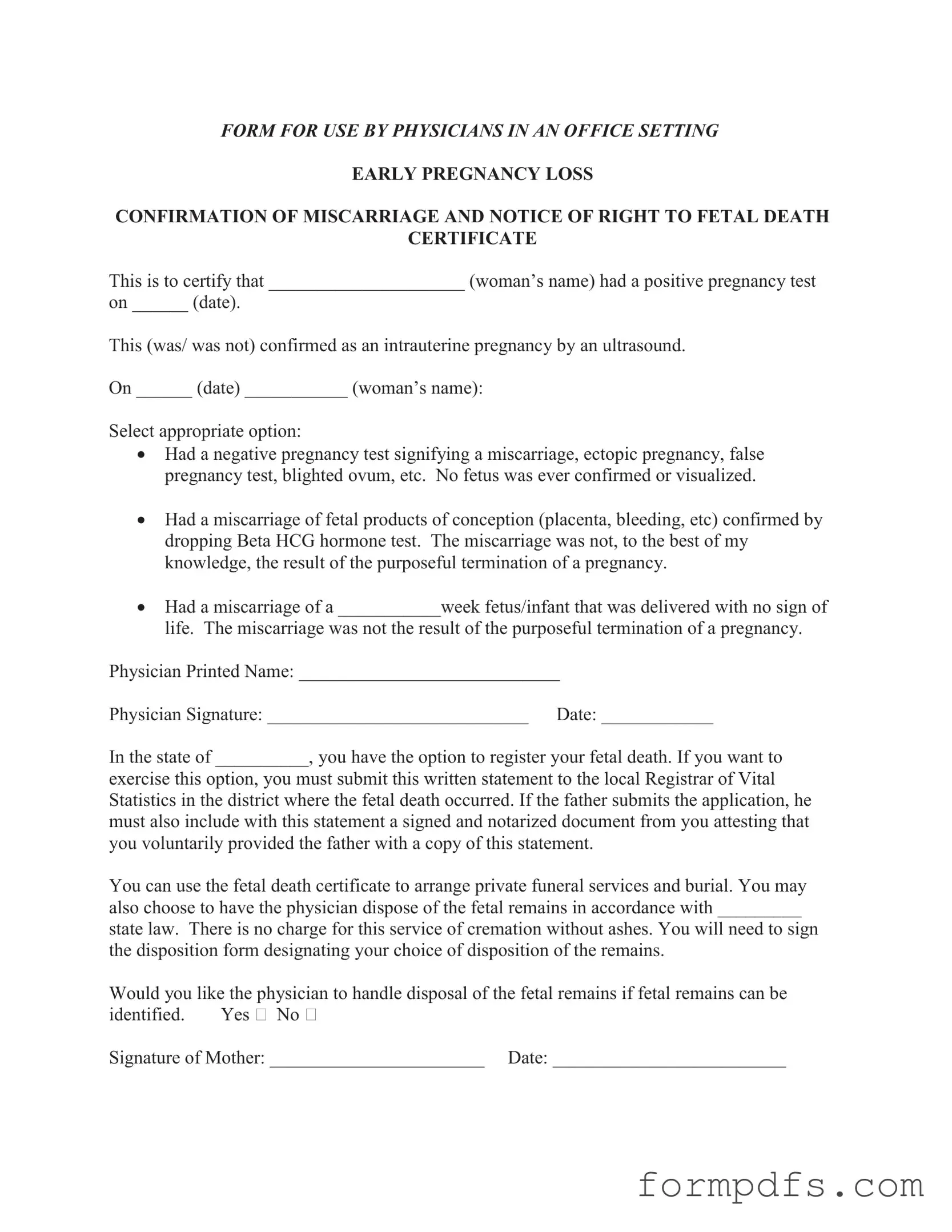What is the purpose of the Miscarriage Discharge Paper form?
The Miscarriage Discharge Paper form serves as a medical record confirming a miscarriage. It documents the details of the pregnancy, including the date of the positive pregnancy test and whether an ultrasound confirmed the pregnancy. This form is important for both medical records and for the parents' emotional and legal needs following a miscarriage.
Who fills out the Miscarriage Discharge Paper form?
The form is completed by a physician in an office setting. The physician will provide details about the pregnancy and the circumstances surrounding the miscarriage, ensuring that all necessary information is accurately recorded.
What information is included in the form?
The form includes the woman's name, the date of the positive pregnancy test, the results of any ultrasounds, and the specifics of the miscarriage. It also includes the physician's printed name, signature, and the date of completion. This information is crucial for legal and medical purposes.
Can I register my fetal death with the local Registrar of Vital Statistics?
Yes, you have the option to register your fetal death in your state. To do so, you must submit the Miscarriage Discharge Paper form to the local Registrar of Vital Statistics in the district where the fetal death occurred. If the father submits the application, he will need a signed and notarized document from you, confirming that you provided him with a copy of the statement.
What can I do with the fetal death certificate?
The fetal death certificate can be used to arrange private funeral services and burial for the fetus. This document provides a formal acknowledgment of the loss and can be important for emotional closure and memorialization.
Is there a cost associated with the disposal of fetal remains?
There is no charge for the service of cremation without ashes if you choose to have the physician handle the disposal of the fetal remains. However, you will need to sign a disposition form indicating your choice regarding how the remains will be handled.
What options do I have for the disposition of fetal remains?
You can choose to have the physician dispose of the fetal remains in accordance with state law. Alternatively, you may opt for private funeral services. The form allows you to indicate your preference, ensuring that your wishes are respected during this difficult time.
What if I do not want to register the fetal death?
If you choose not to register the fetal death, that is entirely your decision. The Miscarriage Discharge Paper form will still serve as an important medical record for your situation. You can focus on healing without the additional legal steps if that is what you prefer.
